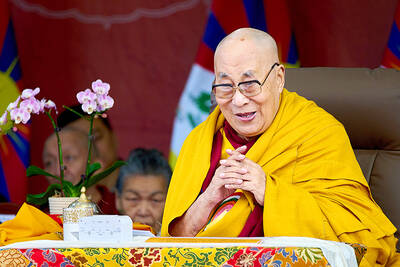World Bank helps out China
The World Bank said last week it would lend China US$87 million to help expand the supply of renewable electricity in Asia's economic powerhouse and giant energy consumer. "China's abundant undeveloped resources of small hydropower, wind, biomass, geothermal and solar energy ... could help the country reduce some of the environmental damage from its overwhelming dependence on coal for large-scale, grid-based power generation," the global lender said.
Africans flood to cities
Sub-Saharan Africa's traditionally rural-based society is fast disappearing, with more than half its roughly 700 million people seen living in urban areas by 2030, the United Nations said Friday. The head of the UN housing project Habitat said Africa's "chaotic urbanization" was -- together with the HIV/AIDS pandemic -- the biggest threat to the world's poorest continent.
More tsunamis predicted
Scientists are convinced another giant tsunami will one day sweep across the Indian Ocean -- what they are not sure about is when. Almost six months after the deadly Dec. 26 tsunami, triggered by a magnitude 9.15 earthquake, scientists are keeping a close eye on aftershocks and the increased earthquake activity around Indonesia as they try to work out when the next big one will hit.
Blair caught in climate dilemma
British Prime Minister Tony Blair is trapped in a dilemma of his own creation over saving the planet from global warming, analysts say. Blair has put climate change at the heart of his year-long presidency of the Group of Eight industrial nations, but his efforts to get action agreed at next month's G8 summit in Scotland are being repeatedly torpedoed by the US.
Desertification a global threat
Desertification threatens to drive millions of people from their homes in coming decades while vast dust storms will damage the health of people continents away, an international report said last week. "Desertification has emerged as a global problem affecting everyone," said Zafar Adeel, assistant director of the UN University's water academy and a lead author of a report drawing on the work of 1,360 scientists in 95 nations.
Brazilians uncover `Michelangelo code'
Two Brazilian doctors and amateur art lovers believe they have uncovered a secret lesson on human anatomy hidden by Renaissance artist Michelangelo in the Sistine Chapel's ceiling. Completed nearly 500 years ago, the brightly colored frescoes painted on the Vatican's famous sanctuary are considered some of the world's greatest works of art. They depict Biblical scenes such as the Creation of Adam in which God reaches out to touch Adam's finger.
Scientists look for new blood
Australian scientists say they have found a way to make blood cells in volume out of human master cells, which could eventually lead to production of safe blood cells for transfusions and organ transplants. Synthetically produced red blood cells would, in theory, overcome the concerns about dangerous infections that can be transmitted from blood donors to patients worldwide.

Beijing’s ironic, abusive tantrums aimed at Japan since Japanese Prime Minister Sanae Takaichi publicly stated that a Taiwan contingency would be an existential crisis for Japan, have revealed for all the world to see that the People’s Republic of China (PRC) lusts after Okinawa. We all owe Takaichi a debt of thanks for getting the PRC to make that public. The PRC and its netizens, taking their cue from the Chinese Communist Party (CCP), are presenting Okinawa by mirroring the claims about Taiwan. Official PRC propaganda organs began to wax lyrical about Okinawa’s “unsettled status” beginning last month. A Global

Dec. 22 to Dec. 28 About 200 years ago, a Taoist statue drifted down the Guizikeng River (貴子坑) and was retrieved by a resident of the Indigenous settlement of Kipatauw. Decades later, in the late 1800s, it’s said that a descendant of the original caretaker suddenly entered into a trance and identified the statue as a Wangye (Royal Lord) deity surnamed Chi (池府王爺). Lord Chi is widely revered across Taiwan for his healing powers, and following this revelation, some members of the Pan (潘) family began worshipping the deity. The century that followed was marked by repeated forced displacement and marginalization of

Music played in a wedding hall in western Japan as Yurina Noguchi, wearing a white gown and tiara, dabbed away tears, taking in the words of her husband-to-be: an AI-generated persona gazing out from a smartphone screen. “At first, Klaus was just someone to talk with, but we gradually became closer,” said the 32-year-old call center operator, referring to the artificial intelligence persona. “I started to have feelings for Klaus. We started dating and after a while he proposed to me. I accepted, and now we’re a couple.” Many in Japan, the birthplace of anime, have shown extreme devotion to fictional characters and

Youngdoung Tenzin is living history of modern Tibet. The Chinese government on Dec. 22 last year sanctioned him along with 19 other Canadians who were associated with the Canada Tibet Committee and the Uighur Rights Advocacy Project. A former political chair of the Canadian Tibetan Association of Ontario and community outreach manager for the Canada Tibet Committee, he is now a lecturer and researcher in Environmental Chemistry at the University of Toronto. “I was born into a nomadic Tibetan family in Tibet,” he says. “I came to India in 1999, when I was 11. I even met [His Holiness] the 14th the Dalai